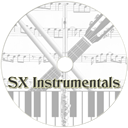Description | This is a rare Oberheim DS-2(A) Digital Sequencer. The DS-2 was the second commercially available digital sequencer ever made (after the EMS) and one of the first machines that Tom Oberheim ever built – afaik even before the SEM. The DS-2A is from 1974 and has an expanded memory. There are three sequences that can be recorded and played back and they share a memory of 48 notes in total. Operation is simple. Sequences can be recorded in realtime via an attached CV/Gate keyboard. When played back, all three sequences can be pitched in realtime with knobs over a very large range. If you choose a high clock rate when recording, the machine can playback sequences in very high speed. So an attached synth can be 'mis-used' as a wavetable generator. There are some interesting things that makes the unit pretty cool to use. There is no way to sync the machine.
DS-2 & DS-2A: The DS-2A Digital Sequencer stores melodici rhythmic sequences. which are played on the synthesizer keyboard, in its memory and plays them back automatically Sequences as long as 144 notes can be recorded and then played back at tempos up to 16 times faster or slower than load tempo. The moment you finish loading playback is instantaneous. The DS-2A provides for different combinations of number of different sequences which can be stored and length of each sequence. You can load: One sequence of up to 144 notes; or one sequence of up to 96 notes. and one sequence of up to 48 notes; or three sequences with up to 48 notes each. Each note in a sequence can have a duration of about l/20 of a second up to eight seconds. Keyboards with up to 61 notes can be accommodated. In addition, a digital display is supplied which tells you the sequence number and note number at all times. You can transpose with the DS-2A as well. Three separate transposition altetnatives. in addition to the original load key, are available, using potentiometers which you can set and forget. or change during play, over a four octave range. The DS-2A has a single step feature which increases its flexibility. In the single step mode one note in a sequence can be loaded or played back at a time. The unit is compatible with Oberheim, Arp, or Moog synthesizers. |
/DS-2-1.jpg)
/DS-2-2.jpg)
/DS-2A-1.jpg)
/DS-2A-2.jpg)
/DS-2A-3.jpg)


